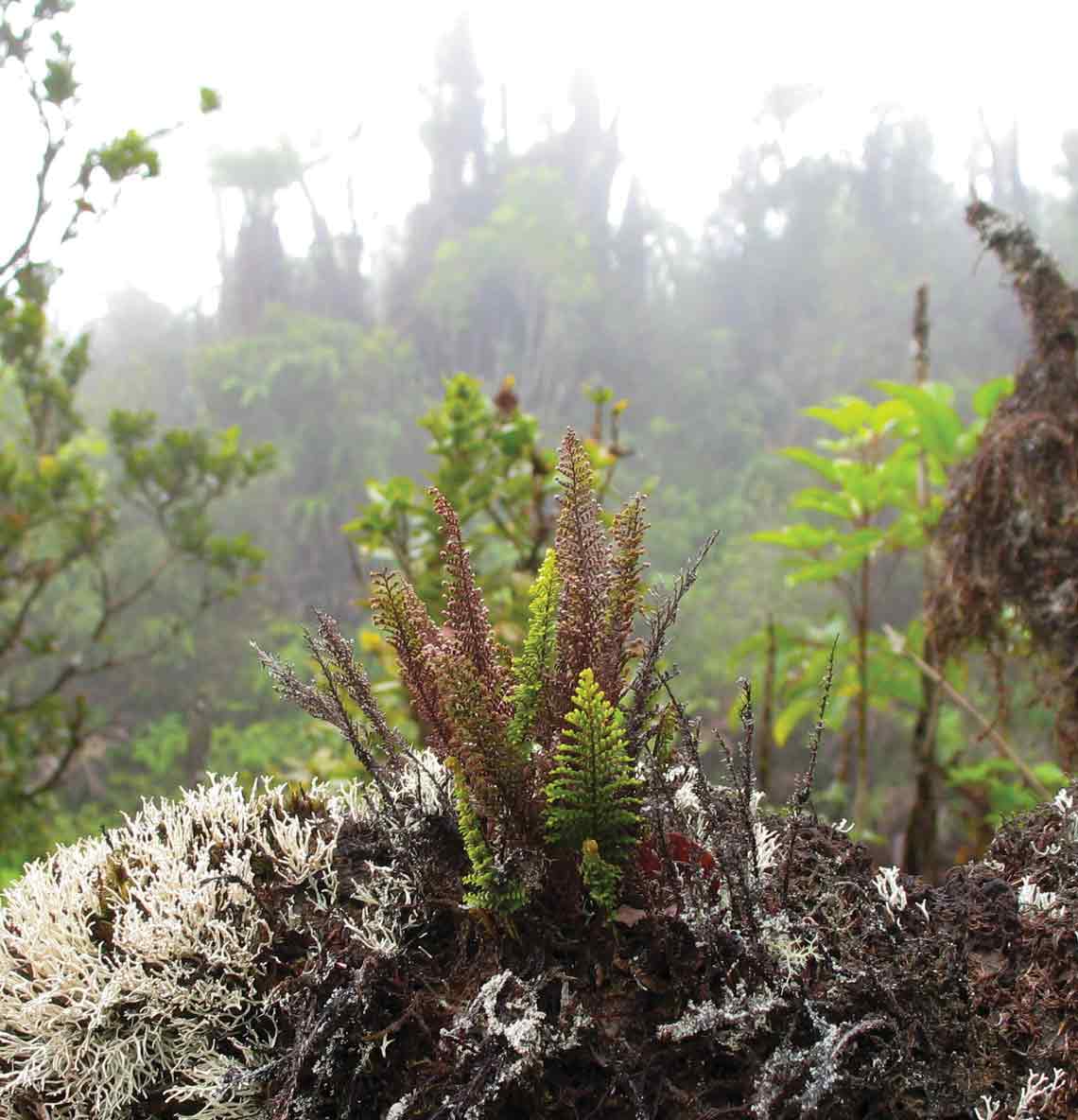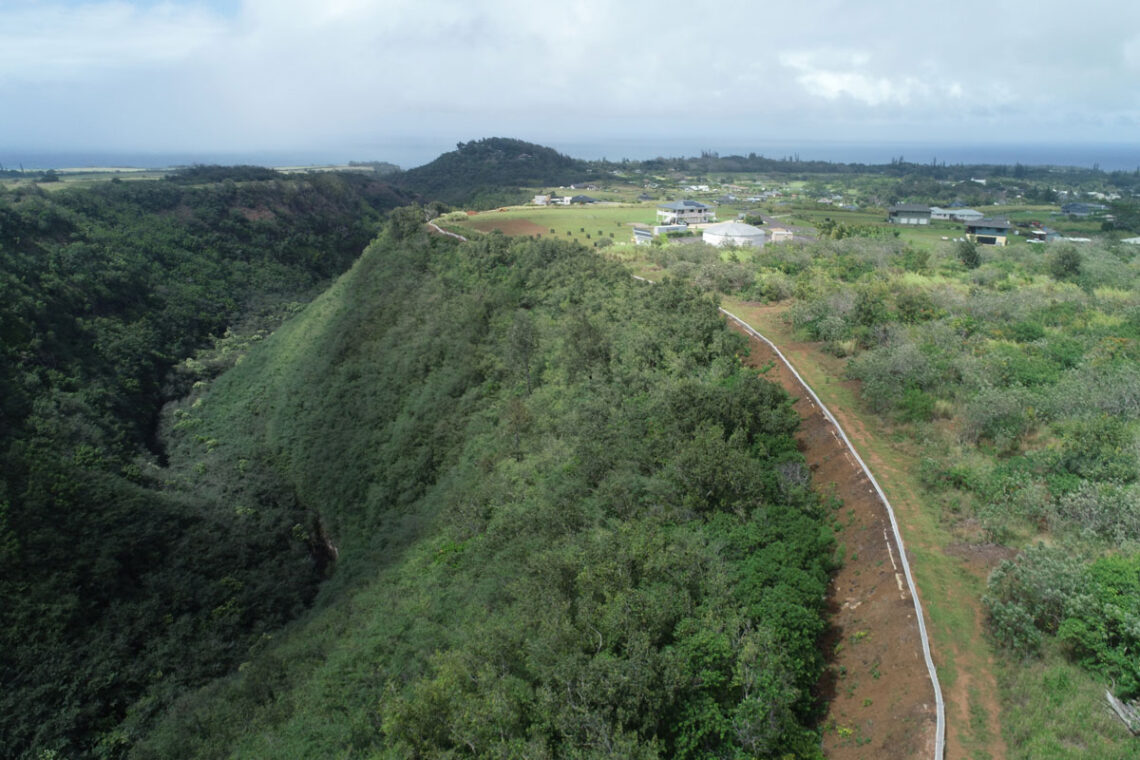
Coqui Barrier

Coqui Barrier Fence
Goal: Reduce movement of coqui from heavily infested areas to controlled areas.
Status: Coqui barriers are in use at homes and neighborhoods around Hā‘iku. With funding from the Hawai‘i Department of Lands and Natural Resources- Division of Forestry and Wildlife, MISC worked with public and private property owners to install a 3 mile stretch of fence along the eastern edge of Māliko Gulch.
Fence design:
A coqui barrier is a 3-foot-tall physical fence with a critical design feature: landscape fabric bent at a 90-degree angle that creates a one-foot horizontal overhang. While coqui frogs are excellent climbers with specialized toe pads, they cannot hang upside down, making this overhang an effective barrier.
The fence uses metal t-posts for stability and conduit pipes bent at three feet to create the overhang structure. Fine mesh fabric serves as the actual barrier, buried six inches underground to prevent frogs from crawling underneath. Equally important is maintaining 20 feet of cleared vegetation on both sides to prevent coqui from “tree-hopping” over the barrier.

When to use:
Coqui barriers are most effective when neighboring properties have uncontrolled infestations due to terrain challenges or other factors. Residents use barriers to protect their properties when adjacent landowners are not managing coqui populations. At the landscape level, the Māliko barrier supports residential control efforts by reducing recolonization from the gulch.
Case study: Māliko Gulch
Despite initial attempts by community members and then MISC, the small population of coqui that became established at the edge of Māliko Gulch continued to grow and spread throughout the entirety of the gulch. Eventually, the gulch became a source population with coqui spilling out to neighboring communities. Māliko Gulch is one of the most prominent features in the area and the terrain presented a unique challenge for crews in trying to spray citric acid on tree-dwelling frogs the size of a quarter, especially at night.
In 2018, the Hawai‘i Department of Land and Natural Resources — Division of Forestry and Wildlife approached MISC to explore solutions to the spread of coqui. The agreed upon project was building a barrier along the eastern edge of Māliko Gulch in hopes the barrier could stanch the influx of invading coqui reaching neighborhoods from Māliko. Funding for the project was approved in 2020.
The barrier provides a passive solution to minimize spread from Māliko into neighboring communities. Preventing spread would increase the efficacy of coqui removal on residential properties.
Barrier background:
Coqui barriers were originally developed and tested by Dr. Arnold Hara of the University of Hawai‘i – College of Tropical Agriculture and Human Resources on Hawai‘i Island, , tThese barriers were originally used to help nursery owners keep coqui frogs from getting into their greenhouses. Homeowners have successfully used them to keep coqui from moving into their yards. MISC used a barrier along the roadway in Kaluanui as it crosses Māliko to prevent coqui from moving higher in elevation.
Timeline:
- 2006: HDOA and UH-CTAHR design and test coqui barrier on Hawai‘i Island
- 2008: MISC installs pilot barrier along Kaluanui Road to prevent mauka spread
- 2013: Flood damages treatment infrastructure in Māliko and spreads coqui further into gulch
- 2018: DLNR-DOFAW proposes large-scale coqui barrier project
- 2020: Project funding approved
- 2021: Contract development, material procurement begins
- 2022: MISC hires staff to oversee barrier project
- 2023: Installation begins at coqui barrier sites
- 2024: Continued logistics with property owners, vegetation clearing, and fence construction
- 2025: By March, the last of the barrier was completed
Resources:
- Barrier handout – this document has Matt’s contact information on the bottom.
- Fencing for Frogs; the effort to build a barrier to slow down coqui in Haiku is underway
